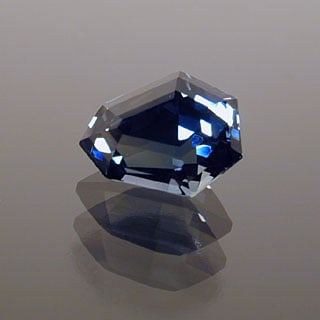Choosing Faceting Angles
With so many recommended faceting angles, new gem cutters can have a hard time choosing one. Learn the basic guidelines and some exceptions to the rules.
4 Minute Read
With the advent of computerized ray tracing programs, such as GemRay, this situation changed. Gem cutters tested old theories and added new insights. Although many old principles have been clarified or improved, the move to shallower crown angles represents the only significant change. Some of the older, but still excellent, books on faceting don’t have this information.
For newcomers, all those recommended choices for faceting angles can be bewildering. Why are there so many variations? The simple fact is that most of them work fairly well!
Below, you’ll find a summary of current guidelines for choosing faceting angles. While these general guidelines do have some exceptions, they’ll help you get the greatest brilliance from your cutting.
Choosing Pavilion Angles
By far, the most important decision a faceter must make is choosing the correct pavilion main angles. Fortunately, it’s very simple. For almost all the materials we gem cutters cut, 42° will give you the greatest brilliance.
This standard practice has a few exceptions:
- For gems with a refractive index (RI) under 1.6, picking an angle of 43° will minimize windowing.
- Consider 41° for gems with a very high RI (around 2).
- However, until you
…
Donald Clark, CSM IMG
The late Donald Clark, CSM founded the International Gem Society in 1998. Donald started in the gem and jewelry industry in 1976. He received his formal gemology training from the Gemological Institute of America (GIA) and the American Society of Gemcutters (ASG). The letters “CSM” after his name stood for Certified Supreme Master Gemcutter, a designation of Wykoff’s ASG which has often been referred to as the doctorate of gem cutting. The American Society of Gemcutters only had 54 people reach this level. Along with dozens of articles for leading trade magazines, Donald authored the book “Modern Faceting, the Easy Way.”
Related Articles
Gram Wagon Wheel Gem Design
Tin, Corian, and Ceramic Lap Testing
Miscellaneous Gems: Polishing Survey Results
Getting the Best Gem Yield from a Crystal
Latest Articles
Classic Engagement Ring Stones
Broken Bangle — The Blunder-Besmirched History of Jade Nomenclature: Book Review
Cuprite Value, Price, and Jewelry Information
Gemstone Radiation Treatment
Never Stop Learning
When you join the IGS community, you get trusted diamond & gemstone information when you need it.
Get Gemology Insights
Get started with the International Gem Society’s free guide to gemstone identification. Join our weekly newsletter & get a free copy of the Gem ID Checklist!
